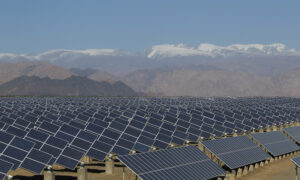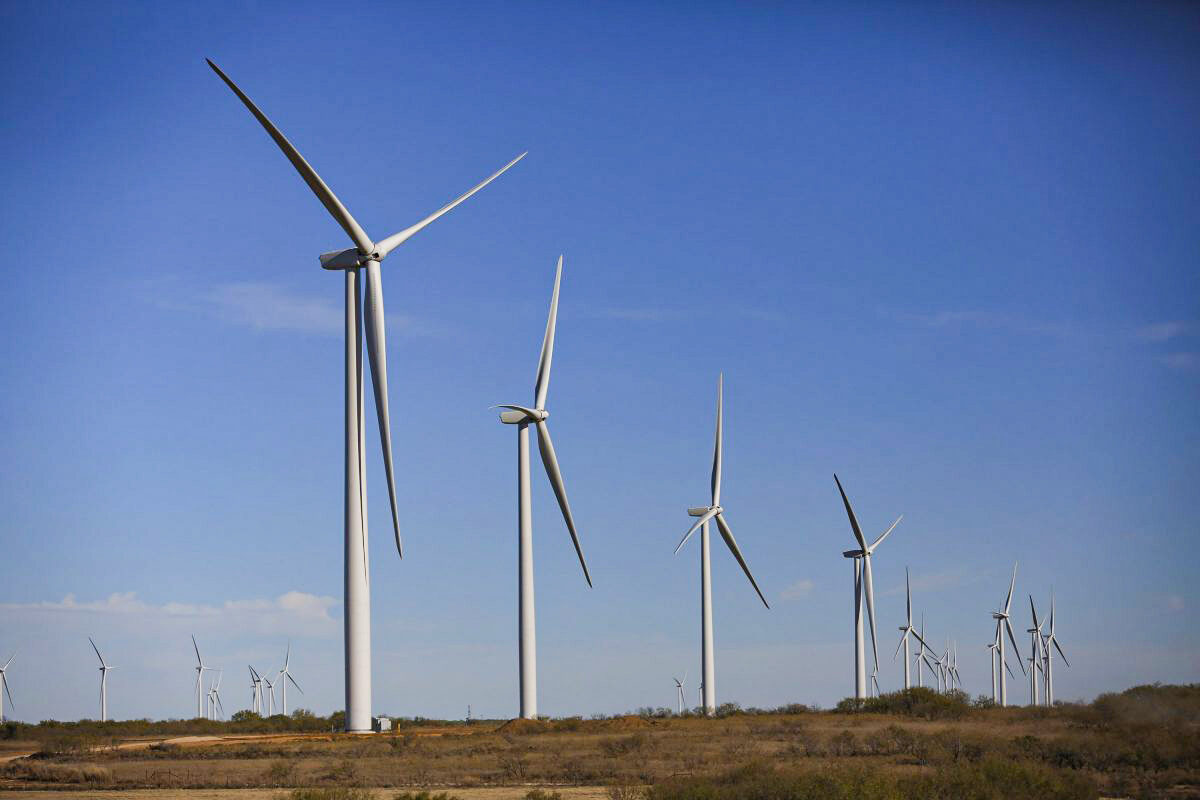Why Is China Shunning Solar Energy?
CommentarySolar is the future, we’re told. It’s risk-free, we’re assured. But it’s not. Solar energy is inefficient. It’s also costly, not just financially but also environmentally. The world is in the midst of a food security crisis. Now, in an effort to combat this escalating crisis, China, the most populated country in the world, is considering banning solar developers from building solar panels on farmland. The Irish Independent recently reported that the Chinese Communist Party (CCP) is seriously considering making “forests and cultivated farmland off-limits for solar development.” Why? After all, China invested heavily in various solar power projects. According to Bloomberg, investment in solar development “was 29 billion yuan ($4.3 billion) from January through April, about 204% higher than in the same period a year earlier.” The CCP recently vowed to double the country’s wind and solar capacity by 2025. Now, though, Beijing is prepared to do a complete 180 and turn away from renewable energy. That’s because, as the Irish Independent piece noted, many wind and solar plots are considered “unstable.” Worse still, according to analysts at GreenMatch, a company very much dedicated to promoting renewable energy, the construction of solar facilities comes with significant costs, including “soil compaction, alteration of drainage channels and increased erosion.” In other words, if farmers wish to grow crops, solar energy could drastically affect their plans. The analysts noted that central tower systems require copious amounts of water for cooling purposes, a major concern in arid environments. Moreover, “an increase in water demand may strain available water resources as well as chemical spills from the facilities.” Such a strain “may result in the contamination of groundwater or the ground surface.” Remember, these words come from people who support the use of solar. They work for an environmentally-conscious company. Although the U.S. Department of Energy assures us that solar technologies “can help reduce air emissions and improve air quality,” the analysts at GreenMatch warn that the actual construction of solar energy power plants poses significant hazards to our air quality. Additionally, these facilities create soil-carried pathogens that contaminate neighboring water reservoirs. Not very environmentally friendly. In a recent piece for Human Events, titled “Coal is Dead, Long Live Coal,“ I highlighted the fact that solar panels, supposedly benign in nature, actually produce toxic waste that is many times more hazardous than nuclear waste. A wind farm operates in Clay County, Texas, on Dec. 9, 2015. There are efforts to build more, but not everyone is in favor of them. (Rodger Mallison/Star-Telegram via AP) What about wind power, the much-discussed sibling of solar? First off, they are noisy. Because of the noise pollution, this restricts where wind farms can be constructed. Analysts at Solar Reviews have noted that although wind promotes clean energy, the downsides far outweigh the limited upsides. Wind is inherently unpredictable. As obvious as it sounds, energy can only be produced when the wind blows. No wind, no energy. No energy, no crops. Then there’s the threat to wildlife. According to the U.S. Fish and Wildlife Service, anywhere between 140,000 and half a million birds are killed by wind farms each year. A 2019 report from the Global Warming Policy Foundation (GWPF) concluded that wind turbines were (and one assumes still are) “doing great harm to wildlife.” The GWPF says it “does not have a position on wind or renewable energy. The GWPF further criticized wind turbines in a follow-up report, ominously titled “Green Killing Machines.” The GWPF warned that “the risk to birds and other winged creatures is so great that there is a possibility of whole populations being wiped out” by wind turbines. Finally, besides being hazardous to the soil and various species of animals, solar and wind are prohibitively expensive. For the average American, according to a 2021 article published by Solar Reviews, the installation process for solar panels costs about $2 or $3 per watt. An average U.S. household consumes about 11,000 kilowatt hours (kWh) per year or about 990 watts per month. In other words, the average American must be prepared to invest tens of thousands of dollars to power their home. All that investment for what, exactly? According to Richard Michelfelder, a clinical associate professor of finance at the Rutgers School of Business-Camden, renewable resources, solar included, are considerably less reliable than conventional power sources. This is because “they do not produce output when the weather is cloudy or at night or when there is no wind.” Although “renewables have a place in solving our energy needs,” they should not “play a primary role,” he cautioned. Utilities should rely on tried and tested traditional methods, he added. This brings us back to China and the

Commentary
Solar is the future, we’re told. It’s risk-free, we’re assured. But it’s not.
Solar energy is inefficient. It’s also costly, not just financially but also environmentally.
The world is in the midst of a food security crisis. Now, in an effort to combat this escalating crisis, China, the most populated country in the world, is considering banning solar developers from building solar panels on farmland.
The Irish Independent recently reported that the Chinese Communist Party (CCP) is seriously considering making “forests and cultivated farmland off-limits for solar development.”
Why?
After all, China invested heavily in various solar power projects. According to Bloomberg, investment in solar development “was 29 billion yuan ($4.3 billion) from January through April, about 204% higher than in the same period a year earlier.”
The CCP recently vowed to double the country’s wind and solar capacity by 2025. Now, though, Beijing is prepared to do a complete 180 and turn away from renewable energy.
That’s because, as the Irish Independent piece noted, many wind and solar plots are considered “unstable.”
Worse still, according to analysts at GreenMatch, a company very much dedicated to promoting renewable energy, the construction of solar facilities comes with significant costs, including “soil compaction, alteration of drainage channels and increased erosion.” In other words, if farmers wish to grow crops, solar energy could drastically affect their plans.
The analysts noted that central tower systems require copious amounts of water for cooling purposes, a major concern in arid environments. Moreover, “an increase in water demand may strain available water resources as well as chemical spills from the facilities.” Such a strain “may result in the contamination of groundwater or the ground surface.”
Remember, these words come from people who support the use of solar. They work for an environmentally-conscious company.
Although the U.S. Department of Energy assures us that solar technologies “can help reduce air emissions and improve air quality,” the analysts at GreenMatch warn that the actual construction of solar energy power plants poses significant hazards to our air quality. Additionally, these facilities create soil-carried pathogens that contaminate neighboring water reservoirs. Not very environmentally friendly.
In a recent piece for Human Events, titled “Coal is Dead, Long Live Coal,“ I highlighted the fact that solar panels, supposedly benign in nature, actually produce toxic waste that is many times more hazardous than nuclear waste.

What about wind power, the much-discussed sibling of solar?
First off, they are noisy. Because of the noise pollution, this restricts where wind farms can be constructed. Analysts at Solar Reviews have noted that although wind promotes clean energy, the downsides far outweigh the limited upsides. Wind is inherently unpredictable. As obvious as it sounds, energy can only be produced when the wind blows. No wind, no energy. No energy, no crops.
Then there’s the threat to wildlife. According to the U.S. Fish and Wildlife Service, anywhere between 140,000 and half a million birds are killed by wind farms each year.
A 2019 report from the Global Warming Policy Foundation (GWPF) concluded that wind turbines were (and one assumes still are) “doing great harm to wildlife.” The GWPF says it “does not have a position on wind or renewable energy. The GWPF further criticized wind turbines in a follow-up report, ominously titled “Green Killing Machines.” The GWPF warned that “the risk to birds and other winged creatures is so great that there is a possibility of whole populations being wiped out” by wind turbines.
Finally, besides being hazardous to the soil and various species of animals, solar and wind are prohibitively expensive. For the average American, according to a 2021 article published by Solar Reviews, the installation process for solar panels costs about $2 or $3 per watt. An average U.S. household consumes about 11,000 kilowatt hours (kWh) per year or about 990 watts per month. In other words, the average American must be prepared to invest tens of thousands of dollars to power their home.
All that investment for what, exactly?
According to Richard Michelfelder, a clinical associate professor of finance at the Rutgers School of Business-Camden, renewable resources, solar included, are considerably less reliable than conventional power sources. This is because “they do not produce output when the weather is cloudy or at night or when there is no wind.” Although “renewables have a place in solving our energy needs,” they should not “play a primary role,” he cautioned. Utilities should rely on tried and tested traditional methods, he added.
This brings us back to China and the possibility of shunning solar. In times of crisis, one cannot take a gamble. Renewable energy may very well be the future. However, in the here and now, at this very moment, the world requires reliable ways of powering homes and vehicles. This explains why the CCP might lift a two-year ban on Australian coal.
Views expressed in this article are the opinions of the author and do not necessarily reflect the views of The Epoch Times.












